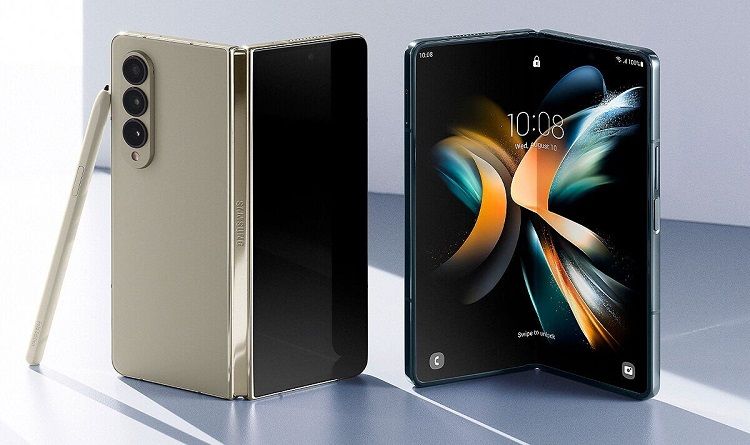
2022 is blessed year for us with some truly superb smartphones. Whether you’re looking for performance, camera smarts, or value, our definitive list of the ten best phones has it all. Samsung and Apple feature of course, but looking further afield to Android competitors such as OnePlus, Google, Oppo, and Asus could mean you find your ideal pocket partner.
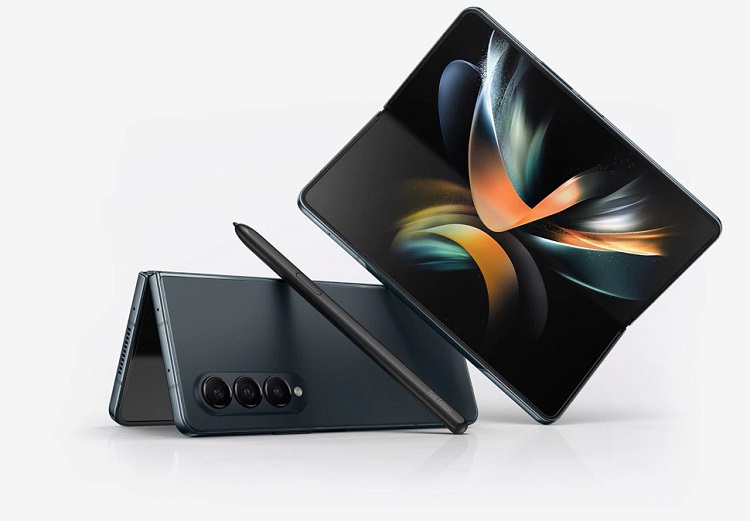
Samsung Galaxy Z Fold4
The Samsung Galaxy Z Fold4 costs $1,799, which is nearly the same as the cost of a high-end phone and a tablet due to its cutting-edge technology, making it one of the most expensive devices available. Speaking of the display, the folding inner panel preserves the dimensions of the previous model: the diagonal is 7.6 inches, the refresh rate runs at 120Hz, and it is a granularly adaptable refresh rate, in keeping with the Fold's high-end position. If anything, further improvements in display technology—Samsung advertised a more power-efficient panel for this generation Fold—combined with the Snapdragon 8+ Gen 1 chipset.
Even though they wished the charging process was a touch faster, the 4400mAh battery powered the user through a demanding day. Three times as long as the OnePlus 10T's full charge time is needed to go from 0 to 100% in a full 90 minutes.
Stereo speakers, the side-mounted capacitive fingerprint sensor, an IPX8 rating (water only, no dust), and two selfie cameras are all included. One selfie camera is on the outside, while the other is tucked away beneath the flexible display. Those appear to be set right now, and there doesn't seem to be a reason to change them.
The Z Fold 4 is the best option if you need the most new-fashioned gadget on the market. Just keep children away from it, and get insurance in case the worst happens.
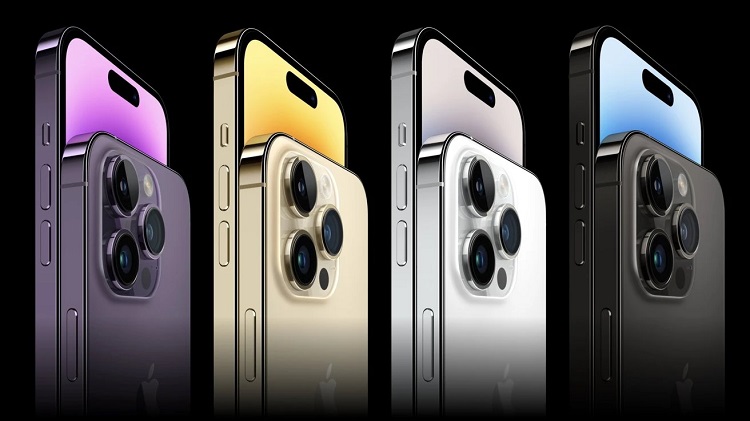
iPhone 14 Pro
The Apple iPhone 14 Pro ($999 starting price) exhibits certain symptoms of middle child syndrome. Even though some of the changes are superficial, it's impossible to ignore them when the Dynamic Island debuts with such a drastic visual overhaul. Because of this really ingenious feature, you can always view the weather, timers, music playing, and other information at the top of the screen without opening an app. Apple has finally released an always-on display that does little more than darken your lock screen.
Similar to the Samsung Galaxy S22 Ultra and the majority of the Android phones on this list, the camera makes advantage of a high megapixel (in this case, 48-megapixels) sensor to merge many pixels into one, producing 12-megapixel photos. The images are generally excellent and, despite occasional over-sharpening, stand out as the best smartphone photos. Although it is believed the Pixel 6 Pro captures more accurate and realistic skin tones, the Samsung Galaxy S22 Ultra is the best option for zoom.
The dimensions of the iPhone 14 Pro are, for all intents and purposes, the same as those of the 13 Pro: 5.81 by 2.81 by 0.31 inches (HWD) and 7.27 ounces. The Samsung Galaxy S22+ (6.2 by 2.98 by 0.3 inches) and the Google Pixel 6 Pro (6.45 by 2.99 by 0.35 inches), both noticeably larger, are the most direct rivals in terms of cost and functionality.
The 14 Pro's battery life is limited by the test, which entails streaming a YouTube video over Wi-Fi with the screen brightness at its highest setting. It lasted exactly 16 hours, matching the 13 Pro's record but falling far short of the 19 hours the 14 Pro Max managed. For reference, the Galaxy S22+ ran for 10 hours and the Pixel 6 Pro achieved 22 hours.
On any iPhone, quick charging is not an option. When used with a suitable charger, the 14 Pro can reach a maximum wired charging rate of 20W, but you'll need to shell out money for the charging brick. The 14 Pro battery charged from 0% to 50% in 30 minutes during the test, matching Apple's claims. It took about 80 minutes to charge fully. When connected to the company's 45W quick charger, Samsung's Galaxy S22 family may charge in as little as 75 minutes. The OnePlus 10 Pro 5G's rapid 35-minute charging time is unmatched by either Apple or Samsung.
It's fantastic news that the iPhone 14 Pro has the same A16 Bionic chip as the iPhone 14 Pro Max. Again, the A16 Bionic Chip scored 1879 and 4664 in the single- and multi-core Geek bench tests, respectively, while the Google-built Tensor-powered Pixel 6 Pro scored 1,021 and 2,813, and the Qualcomm Snapdragon 8 Gen 1-powered Samsung Galaxy S22+ scored 1,216 and 3,448.
The iPhone 14 Pro is one of the fastest smartphones available, to put it simply. It easily outperforms the Android competition, while the iPhone 13 Pro from a year ago still manages to remain in front of the best Android flagships. The Pro's performance, which consistently ranks first in its class, cannot be questioned.
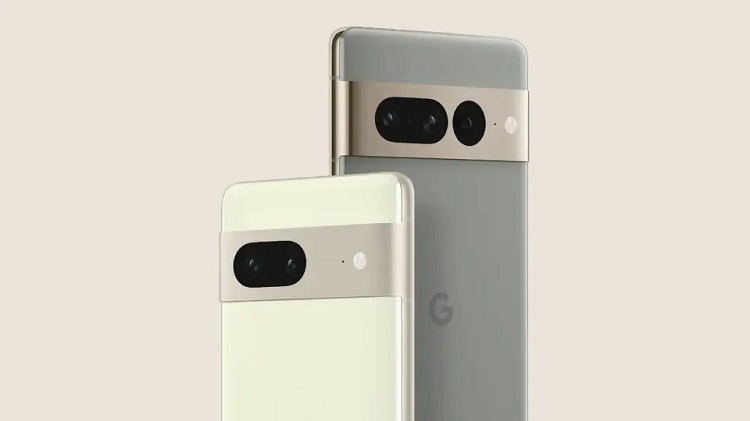
Google Pixel 7 Pro
The 7 Pro is the best Pixel yet and a true "promiscuous" gadget; it is large and hefty, and the design may not be to everyone's taste, but it delivers an incredible Android experience. Even though the cheapest model costs $899, it is still reasonably priced compared to other phones on the market, and it is just as high-quality and well-made as phones from competing manufacturers.
This phone, which measures 162.9 x 76.6 x 8.9mm, feels heavy and bulky in the palm, pocket and bag. It has almost identical proportions to the Samsung Galaxy S22 Ultra and is both taller and thicker than the iPhone 14 Pro Max. It has a recognizable "camera bar" or a band across the top of the phone where the triple rear cameras are located, but this year it is coated in polished metal rather than a simple piece of dark glass.
With a 50Mp main lens with an f/1.85 aperture, a 12Mp ultrawide lens with an f/2.2 aperture with autofocus, and a 48Mp telephoto lens with an f/3.5 aperture, the Pixel 7 Pro's cameras are quite comparable to those of the Pixel 6 Pro. The automatic Face Unblur feature, which is tagged on a photo if it intervenes and does precisely what it says to improve your shots, is more useful. The Pixel 7 phones are the only ones that have the ability to manually unblur any older photo. However, both new and old photos can be manually unblurred with Photo Unblur. This camera system is highly versatile and will serve its purpose well, ranking right up there with the S22 Ultra and X80 Pro.
For the past two years, Google has been using its own Tensor chipset that it created with Samsung. The G2 in the 7 Pro is reliable, but in terms of pure computing power, the A16 in the iPhone 14 Pro is more potent.
The big 5000mAh battery of the 7 Pro is truly stretched by Google. Although charging is just 23W when wired, even with Google's own 30W charger, which is slow compared to other Android flagships, it can reach 50% charge in 30 minutes, which is highly convenient and enough fast charging technology for most people.
The Pixel 7 Pro is one of the greatest phones of 2022 with security upgrades through 2027, a price that is markedly less expensive than competing brands, the most versatile and reliable camera arrangement found in a phone, a gorgeous display and the most intelligent and practical version of Android.
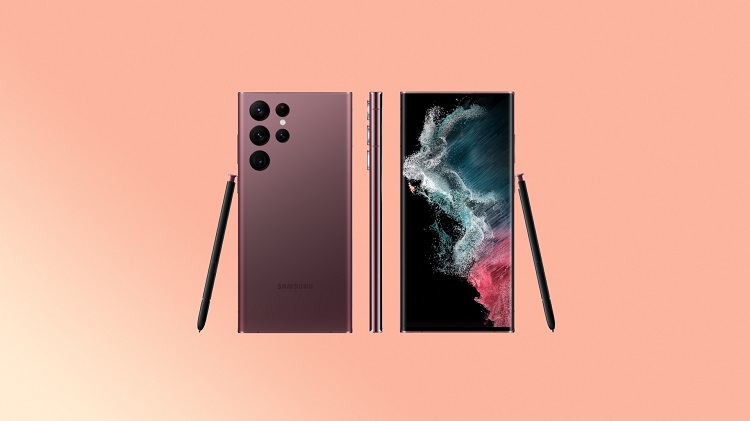
Samsung S22 Ultra
With the Galaxy S22 Ultra, Samsung has created the best all-in-one phone ever by combining the best features of the Galaxy S series with the best of the Note lineup, including the S Pen and the unique design, as well as the spirit of the Galaxy S series' strong cameras and large battery.
For the Galaxy S22 Ultra, 28 different color and RAM/storage combinations are available. If paying full price, one can spend as little as $1,199 on the 8GB/128GB model or as much as $1,599 for the 12GB/1TB model. The screen has a massive diagonal measurement of 6.8 inches and uses the same M11 Dynamic AMOLED technology generation as the S21 Ultra. It also features thin bezels and an adaptable refresh rate of 1-120Hz. The entire panel is covered in the most recent Gorilla Glass and there is a tiny punch-hole camera in the top center.
The Galaxy S22 Ultra includes an S Pen built right into the device, much like a Note phone, so you can always have it with you. The S Pen's improved response time, which is now just 2.8ms, is the main improvement. Compared to the Note 20 Ultra's 9ms, this latency is 3X quicker.
A little DSLR that fits in your pocket is the S22 Ultra. The zoom capabilities of the device are its major gimmick. Having 100 times zoom capability Because of the picture stabilization, a target may be focused on by the phone while maintaining steadiness even when the zoom level is set to its maximum. Samsung has a function known as Adaptive Pixel that allows it to take the data from 9 pixels and combine it. This enables your photos to have greater color and contrast. The phone's back-mounted laser auto-focus sensor also provides an additional boost to focus. In most circumstances, especially during the day, this combined with the phone's fast processor results in speedy, high-quality photos.
There is some dispute around the processor within, as there typically is with Samsung flagship models. The US version of the Galaxy S22 Ultra will have the Qualcomm Snapdragon 8 Gen 1 processor, but the UK and Europe will instead receive the Samsung Exynos 2200 chipset. Historically, Exynos chips have been a little bit slower and less power-efficient than their Snapdragon counterparts.
The Galaxy S22 Ultra had an average battery life for a flagship with a 5,000mAh battery: little over 13 hours, somewhat less than the S21 Ultra from the previous year and roughly on pace with Google's Pixel 6 Pro. Samsung has had a bit of a back-and-forth with charging; it enabled 45W charging rates in the Note 10 series a few years ago before removing support and limiting them to 25W in later flagship devices. The Galaxy S22 Ultra is reportedly capable of receiving the full 45W of charging power this year.
However, this is the only Android device that we are confident Samsung will update and improve. Everything else is excellent, including the sleek design, gorgeous display, S Pen, potent processor, and quick charging. The S22 Ultra does receive our approval, albeit with a more circumspect thumbs up this time around: it's undoubtedly a very excellent phone, but there are a few unforeseen glitches that need to be worked out.
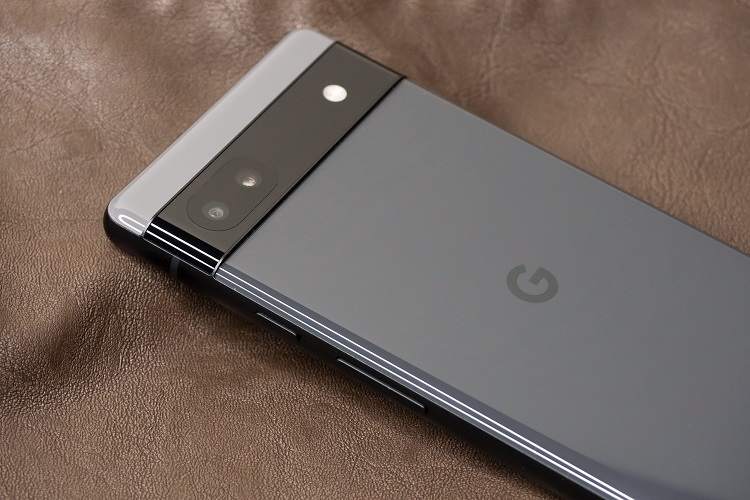
Google Pixel 6a
By matching the processing power of its flagship and making savings elsewhere, Google has followed the example of the Apple iPhone SE and Samsung fe. Because it includes Google's own Tensor chip, the Pixel 6a has comparable processing and graphics power to the Pixel 6 and Pixel 6 Pro. On paper, these changes don't seem all that outrageous given the mid-range $449 pricing.
With smartphone screens, the rule has typically been that the bigger, the better. The Pixel 6a, though, seems exactly right thanks to its small 6.1-inch screen. The size is a good compromise between the Samsung Galaxy S22 Ultra and the iPhone 13 Mini. The Pixel 6a's Tensor chip outscored the pathetic Snapdragon 765G on the Geekbench 5 CPU stress-testing benchmark by almost 75% in both single-core processing and multi-core processing. These results are essentially the same as those of the Pixel 6, with the 6a completely crushing its comparably priced competitors. The sole exception to this is the multi-core score of the Xiaomi 12 Lite.
A stable 4,410 mAh battery powers the Pixel 6a. According to Google's official marketing materials, the Pixel 6a's battery life is 24 hours or, when using Extreme Battery Saver mode, up to 72 hours. The drawback is the sluggish 18W charging. It's sad that there isn't a maximum power delivery of 30W like there was with the ordinary Pixel 6 (with wireless and reverse wireless charging).
The Pixel 6a's camera technology isn't particularly innovative, but the Tensor chip does open up some new possibilities, and pictures are taken and processed much more quickly than on the Pixel 5a. The camera app is straightforward and simple to use. The carousel has the following modes: camera, portrait, night vision, and video. There are also a few more modes, such as Photo Sphere, Panorama, and Lens.
Very few smartphones can capture photos of the same caliber, and those that can are usually flagships that cost twice as much as the Pixel 6a. In addition to using one of the most color-accurate displays I've ever seen, performance is absolutely flawless. There are several positive aspects of the Pixel 6a, so to speak. Since Google's history is widely known at this time, you shouldn't be surprised, but the Pixel 6a deserves praise for packing so much functionality onto a device with such a low price.
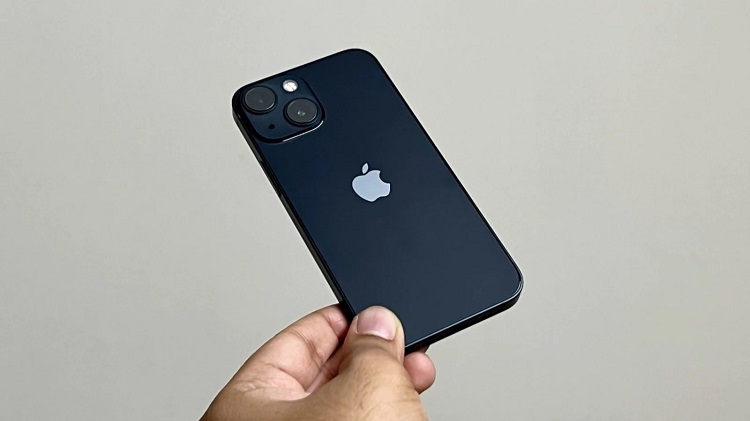
iPhone 13 Mini
If you adore little phones, the iPhone 13 Mini is the one for you, as there was no iPhone 14 Mini this year. This item is not just small; it is extremely small. The majority of individuals will find it easy to operate this phone with just one hand. Its Apple A15 Bionic CPU and iOS are well optimized, making it one of the most powerful phones available despite its diminutive size. For this year's upgrade, Apple even made improvements to the iPhone 12 Mini's terrible battery life.
Apple has finally produced a flagship phone with robust, top-of-the-line internals that is small enough to slide into your jeans pockets. Prior to Apple's release of the iPhone 12 Mini, small phones were a thing of the past.
A little phone like the 12 Mini can only fit so big of a battery inside of it, which results in the phone's poor battery life. The iPhone 13 Mini finally makes a compelling argument for small phones to be used like regular phones in 2022 by fixing one specific issue. For us, the iPhone 13 Mini's improved battery life stands out as the device's largest improvement. We now have a small phone that doesn't require a charge by midday.
Although the battery's capacity has grown, Apple's A15 Bionic technology is mostly to blame for the improvement in battery life. While being one of the most powerful chipsets available, it is more power-efficient than the A14 Bionic from last year. The iPhone 13 Mini is a performance powerhouse that can easily handle the most graphically demanding games. Along with the opportunity to capture videos in the new Cinematic Mode, you can also shoot and edit 4K 60fps videos directly from the phone. Although the display is still limited to 60 Hz, it has a smaller notch and is a little bit brighter than before.
In conclusion, you receive two 12 MP rear-facing cameras that, despite not being the most flexible system available, can take excellent still shots and best-in-class films. This is also one of the more affordable iPhones available, starting at $799. This is an easy choice if you enjoy tiny phones.
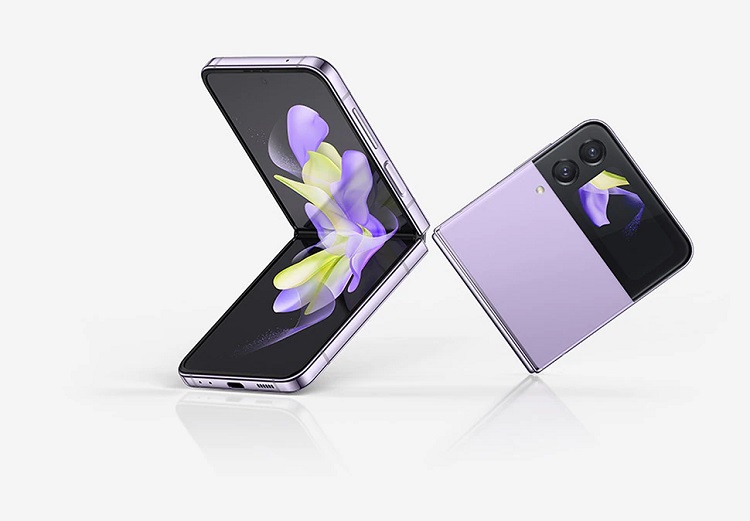
Samsung Galaxy Z Flip4
The MSRP of the Samsung Galaxy Z Flip 4's entry-level 128 GB model is $999.99, while the price of the top-of-the-line 512 GB variant is $1,179.99. The Flip4 includes a foldable 6.7" LTPO-AMOLED display with a 22:9 aspect ratio, an adaptable refresh rate of 10 to 120 Hz, and a resolution of 2640 x 1080 pixels. This results in a high pixel density of over 400 PPI for the device. Even then, the screen only decreases to a minimum of 24 Hz when the developer settings are examined. We presume that a built-in software restriction from Samsung is to blame for this, since Fold4 is also impacted.
Because of the Snapdragon 8+ Gen 1 processor, the Flip4 functions almost flawlessly and without any hiccups in general use. Excellent system performance and quick app loading times are also present. In our benchmark test, the Qualcomm SoC really demonstrates its impressive performance; however, the Samsung phone scores marginally worse than the Asus Zenfone 9.
Despite only having optical image stabilization on the wide-angle lens, the dual camera arrangement on the rear has two sensors with a combined resolution of 12 MP. The Galaxy Z Flip3 5G's new camera sensor is said to be up to 65 percent less brilliant than the Flip4's, which is derived from the Fold3's. Despite somewhat improved low-light photographs and videos compared to its predecessor, Samsung's tiny foldable is still not a pro at handling low light. In our opinion, the 12 MP ultra-wide camera on the Flip4 might provide a bit crisper and more detailed images. Unfortunately, 8K video is not available on this Samsung phone.
The Flip4's battery is slightly bigger than the Flip3's at 3,700 mAh. Both wired and wireless methods can be used to recharge the battery, although neither one does so very quickly. However, the power has been boosted to 25 watts, but inductive charging is only capable of using 10 watts. There is also wireless PowerShare at 5 watts available.
The short battery life of its predecessor, which was one of its greatest flaws, seems to have been somewhat addressed by Samsung. Power users won't be able to go all day without recharging, which is especially problematic given the sluggish fast-charge technology.
The Galaxy Z Flip4 is an extremely intriguing alternative to smaller regular phones like the Asus Zenfone 9 or Samsung's own Galaxy S22 because of its modest profile when folded. But the lesser brightness in comparison to the Flip3 was a little disappointing. In this regard, we had anticipated a similar improvement to the Fold4.
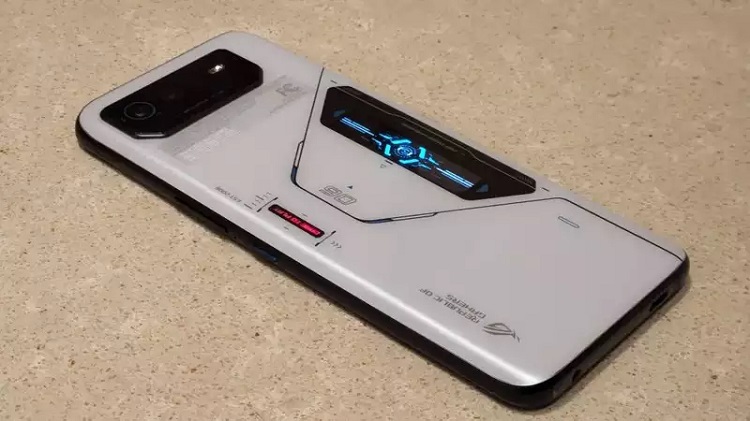
Asus Rog Phone 6 Pro
Look no farther than the Asus ROG Phone 6 Pro if you play a lot of mobile games and need a gadget that can keep up. There isn't a smartphone that is more capable of handling mobile gaming than the Qualcomm Snapdragon 8 Plus Gen 1 SoC, with its blazingly quick and buttery smooth 165Hz OLED display, big 6,000 mAh battery, dual front-facing stereo speakers, and up to a staggering 18GB of RAM.
Since this is a gaming phone, it comes equipped with "AirTriggers," which are useful capacitive touch screens on the right side of the device that can be used as shoulder triggers when the phone is held horizontally while gaming. In addition, the "ROG Vision" rear display lets you show off the phone by giving it more style, even though it doesn't accomplish anything.
According to tests, the ROG Phone 6 is a beast of a performer, capable of running games at 60 frames per second with little judder. The benchmarks are all top-charting songs as well. The main camera system has a 50MP IMX766 main sensor, a 13MP ultrawide (f/2.4) and 2MP macro configuration, as well as a 12MP selfie camera. However, video recording on this phone isn't the best due to poor stability and coping with abrupt changes in illumination. Photos taken with this phone are clear, punchy, and generally good.
The cameras on this phone are obviously not the main attraction because it is a gaming phone, but the optics are good. A 50MP Sony IMX766 sensor, a 13MP ultra-wide camera, and a 5MP macro camera were all included by Asus. Although there isn't a dedicated telephoto setting, Asus uses the 50MP sensor to shoot at 2x lossless in conditions of strong light. It switches to digital zoom when it becomes dark. Although they won't win any prizes, these cameras are more than adequate for the majority of people.
ASUS provides a "Classic" or "Default" software experience, similar to earlier generations. "Default" is what you want for the full gaming experience; "Classic" is your stock Android experience. "Default" embraces ASUS' brutalist sci-fi design language. Although a touch corny, it wasn't quite as annoying as I had anticipated. It's what I used the majority of the time because switching to the Classic experience occasionally felt abrupt because there are some aesthetics you can't modify (like the fingerprint unlock motion).
The ROG Phone 6 Pro is probably not something you should purchase if you're unsure. For those who are not preoccupied with mobile gaming and maximizing speed, some of the hardware and software tradeoffs on this phone will be a turnoff. The ROG Phone 6 in both of its versions, on the other hand, is unquestionably your best option if you're looking for a phone that can play games nonstop.
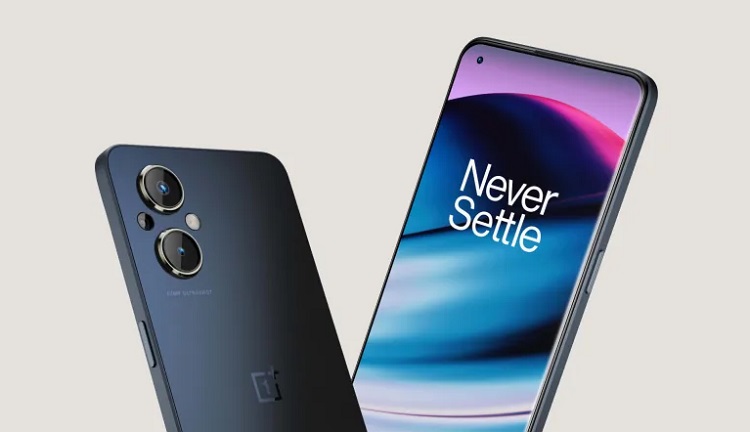
OnePlus Nord N20
It's challenging to find a phone that is more capable than the OnePlus Nord N20 at this price point and retailing for roughly $300. A 5G-ready phone with a good main camera, a nice design, and a quarter the cost of an iPhone 14 Pro Max or Galaxy S22 Ultra is what you get.
Although the 6.4-inch screen only has a 60Hz refresh rate, it is an OLED panel, so the colors are bright and vibrant. The 4,500 mAh battery is also made to last all day by the 60Hz panel, and if you do run out of power, a 33W fast charging brick is provided in the box. A headphone jack and 5G compatibility are also included.
Beware of the enormous second camera lens (and the smaller third lens), because they are only 2 MP sensors and are useless in good lighting settings. The main 64MP camera is fine in those circumstances. However, one excellent rear-facing camera is plenty at this price point in the US.
The rest of the software is standard OnePlus snappy, and although OxygenOS has lost some of its personality, it is still minimal and clean compared to many other Android manufacturers. One thing to keep in mind is that even the word "budget" has different meanings to different people, and a single solution might not be able to fully understand the intricacies of every person. Here are some additional fantastic low-cost Android phones for you to take into account if you're looking for more choices.
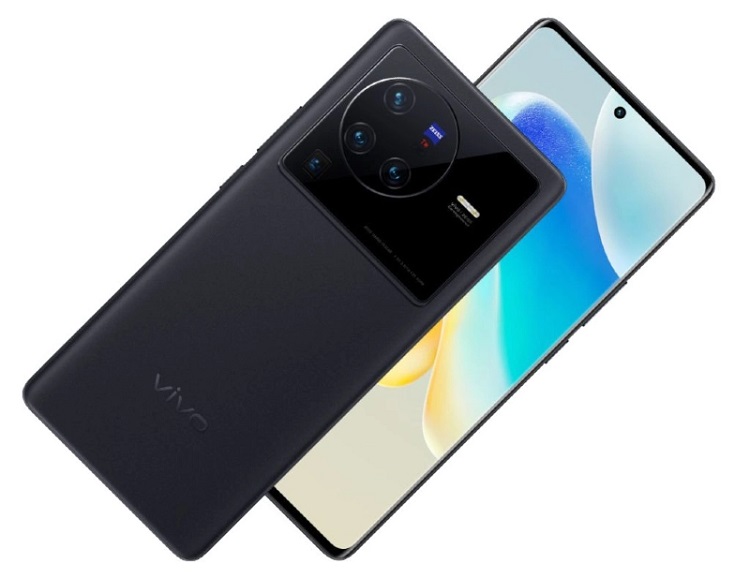
Vivo V80 Pro
In terms of display brightness, processor power, UI smoothness, and camera performance, the Vivo X80 Pro is a refined top-tier Android flagship that can easily compete with Samsung or Apple's greatest products.
The X80 Pro now holds the top spot in Vivo's lineup because the X80 Pro Plus is still a ways off. The Snapdragon 8 Gen 1 chipset, quick wired and wireless charging, a QHD+ 120Hz OLED screen, and IP68 water and dust resistance are all features found in the Pro model, which offers everything you'd expect from a contemporary premium flagship.
Vivo made significant improvements to the photography experience on its most recent flagships, and the X80 Pro is no exception. In terms of night photography, Vivo has established itself as one of the top competitors, and this pattern holds true here as well. With the primary camera, there has been an overall loss of detail; images taken in low light are a little softer than those taken during the day, and photographs are occasionally somewhat over-sharpened. Regarding ultrawide, Vivo's 48MP camera provides a decent amount of detail and a low level of noise for an ultrawide photographer. As a result, the camera observes uneven color reproduction as compared to the primary shooter, boosting contrast and occasionally crushing black.
The battery and wired charging specs have also been improved by Vivo, which is now offering a 4,700mAh battery and 80W wired charging as opposed to the X70 Pro Plus' 4,500mAh battery and 55W wired charging. Otherwise, you still have this 50-watt wireless charger available. Like its predecessor, Vivo also features 50W wireless charging and claims that a full charge can be obtained in just 50 minutes.
Compared to its previous flagship, the Vivo X80 Pro isn't revolutionary, but it doesn't need to be given how much the X70 Pro Plus got right in the first place. The most recent flagship keeps features like a QHD+ 120Hz OLED screen, IP68 certification, and a flexible back camera system, but adds even quicker cable charging, a slight but welcome increase in battery capacity, and the greatest in-display fingerprint sensor available on a smartphone. However, even if customers get a high-quality phone to compete with the Galaxy S22 series, the cost in the UK and the rest of Europe is astronomically high, putting it up against the top models from Samsung, Apple, Google, and other manufacturers.